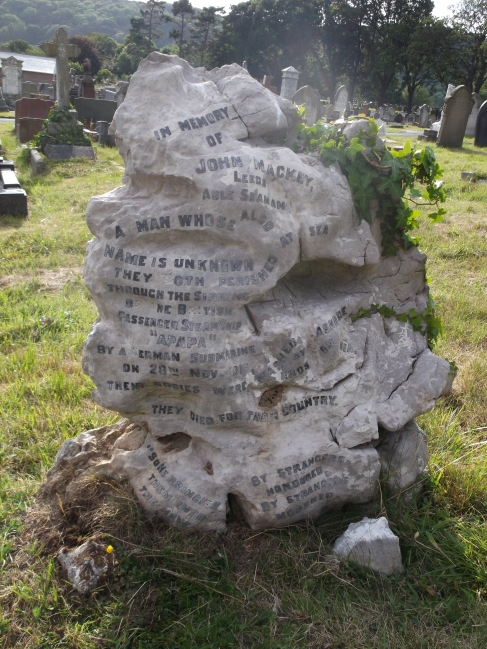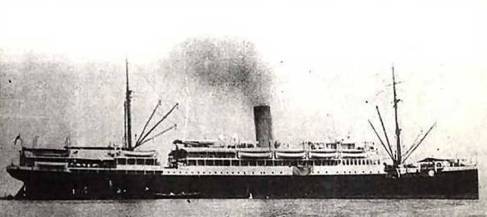While at Bron-y-Nant Cemetery in Colwyn Bay this week I came across a fascinating First World War grave marker. Situated close to the boundary wall of the old red bricked isolation hospital one headstone – a large, local limestone boulder – stands out for its simplicity while the rest in this century old cemetery are the usual mix of shapes and styles.
The epitaph is both difficult to read and follow. After nearly one hundred years some of the lead characters have become detached while the uneven contours of the stone must have been a challenge to the monumental mason. It reads:
“In memory of John Mackey, Leeds, Able Seaman also a man whose name is unknown they both perished through the sinking of the British Passenger Steam Ship ‘Apapa’ by a German Submarine on 28TH Nov 1917 their bodies were washed ashore at Rhos on Sea. They died for their country”
The SS Apapa was one of the largest liners in the Elder Dempster fleet and was returning home to the port of Liverpool from West Africa when she was torpedoed by a German submarine. The vessel had reached a position three miles north east of Port Lynas, Anglesey when she was attacked at 4.10 a.m. on Wednesday, November 28th, 1917, when steaming at 13 knots. No sign of the submarine was visible to those on board. The torpedo exploded on the starboard side extinguishing the electric light and making the work of mustering the passengers much more difficult, but fortunately the sea was calm, with brilliant moonlight. Captain Toft managed to launch a number of boats without incident, but ten minutes after the first attack a second torpedo struck one of the boats containing around 30 people and killed or drowned the majority. There were 249 persons on board the SS Apapa; 40 passengers and 37 crewmen were lost.
Other bodies were washed ashore elsewhere on the North Wales coast including one at Abergele and a further three were laid to rest at Glanadda Cemetery in Bangor.
There are thirty graves in Bron y Nant cemetery of the men and one woman who died during the first and second world wars. Not all are marked with the familiar Commonwealth War Graves Commission Portland stone markers, the majority are private family memorials. This grave can be found in section B.232.


It was really interesting to read this. My Great Grand Mother was one of the survivors. She was returning to Edinburgh from Calabar/Forcados Island, Nigeria.
Thank you for getting in touch Simon. Fascinating to hear your grandmother was aboard the SS Apapa when she was torpedoed and that she was one of the lucky survivors.
There’s a grave of an ‘unknown engineer’ at Llanasa church, Flintshire.
A beautiful village and serene last resting place.